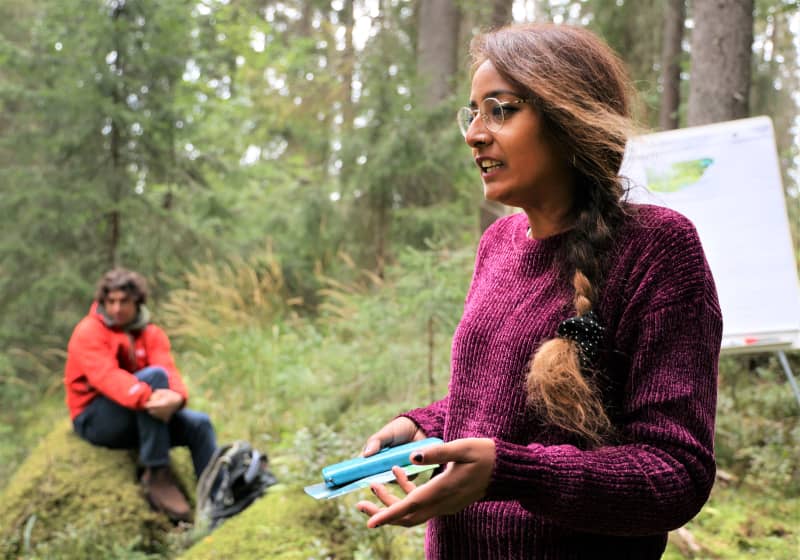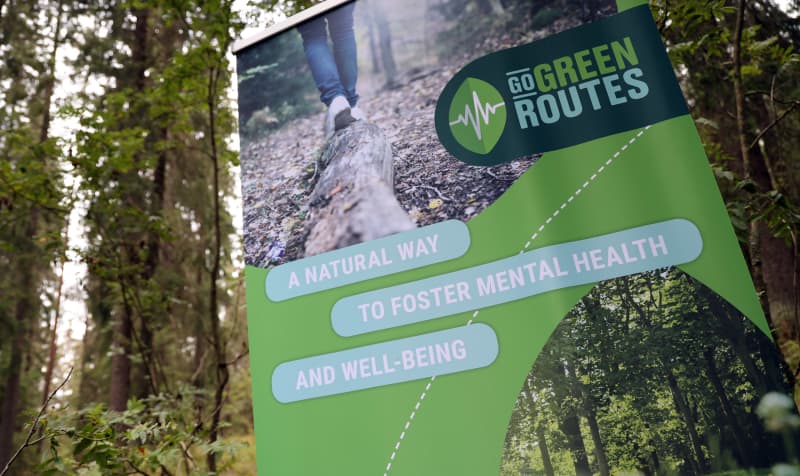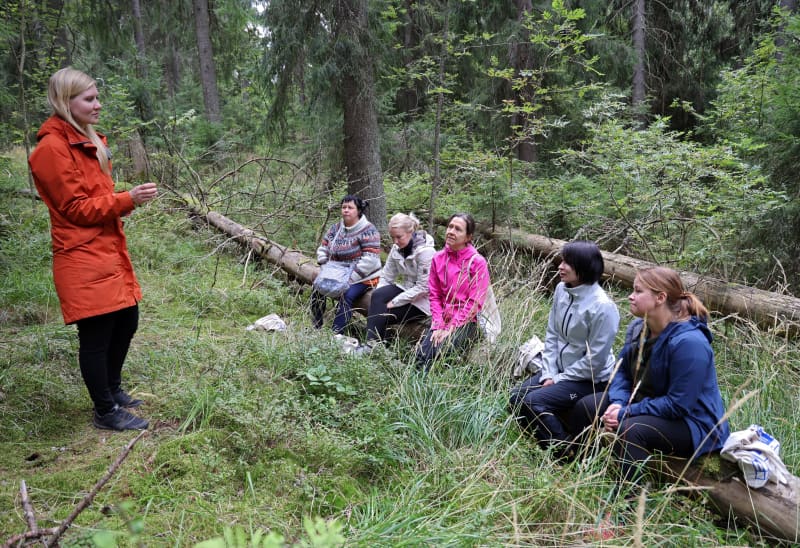The City of Lahti and Päijät-Sote are investigating what health benefits can be gained from the forest next to the Päijät-Häme Central Hospital. According to the researcher, municipalities should be clearly shown the monetary value of the health benefits of nature.
The Kintterö forest near the Päijät-Häme Central Hospital is an ordinary forest along the highway, but it is particularly well suited as a health forest. Many forests can have health benefits, but studies show that certain types of forest are more beneficial to well-being.
A good health forest is so extensive that it has the feel of a forest. It is an advantage if it is easy to reach, close to people and easy to walk around. The forest should also be sufficiently diverse.
In early September, Suutari led Päijät-Soto employees to the health forest. Over five days, a total of twenty health and social services employees did sensory exercises in the forest and considered how the adjacent forest could be used either in their work with patients or in their own well-being at work.
– We walked quite peacefully. During the lessons, emotions ran high, says Tiina Martikainen.
Sari Kalenius is clearly moved.
– The forest can give a lot. It can comfort and inspire. You got to experience everything here, says Kalenius.
According to Kalenius and Martikainen, families and individual family members can meet just as well in natural surroundings as indoors. In nature, you can go hiking, cook, play or just talk with your family.
Organizing meetings in nature requires more time and effort. On the other hand, nature encounters are also rewarding for the employee.
In addition to children’s protection clients, Kalenius and Martikainen want to bring their colleagues to the forest.

Forest experience shared across Europe
Lahti is one of the cities of the European Go green routes network. Each of the six cities has its own research site. In Lahti, the destination is a health forest, in other cities there are green areas, bike paths and the seaside.
The coordinator is the link between the cities. He spreads knowledge and good practices that could be transferred from one city to another. The purpose is to find ways for city dwellers to find their way to nature more easily than at present.
– We want to bring people back close to nature to feel good, happy and have exciting experiences, says Utkarsh.
In his opinion, it is too early to assess what has been learned so far.
– It is already clear that nature increases people’s well-being. We are still figuring out how to make it even bigger. There is still a long way to go for Lahti or any other city to be the healthiest city in the world, says Shreya Utkarsh.

The health benefits are undeniable
Research knowledge about the impact of the environment on people’s health and well-being has expanded a lot in the last five years. In particular, research evidence on mental health benefits has strengthened in recent years.
Research has shown that with urbanization, people’s relationship with nature changes. If nearby nature is not available due to the compacted urban structure, young people may not develop as strong a relationship with nature as in previous generations.
– We have an urbanizing generation, for whom the importance of nature is not nearly as great as for older age groups.
Nature saves money on war spending
In Liisa Tyrväinen’s opinion, the comprehensive thinking of the city of Lahti and Päijät-Sote and the cooperation between urban planning, the environment and the social and health sector are an excellent example of how the health benefits of nature can be widely used.
In municipalities, the matter would go better if the research data offered facts about the value and importance of nature-based services for residents and public health.
Researchers in the field have already proposed a study that would concretely clarify what the health benefits of nature could mean financially. Tyrväinen cites savings for sickness, reducing mental health services or absences from work as examples.
– The importance of nature values \u200b\u200bis not yet sufficiently understood, but it is being discussed more and more, says research professor Liisa Tyrväinen.

